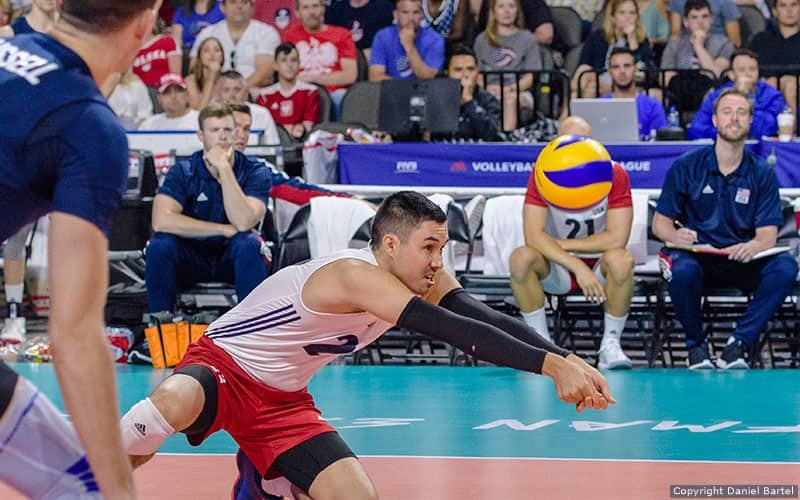
Originally published in VolleyballUSA Summer 2017
Kayla Banwarth
2016 U.S. Olympian, bronze-medal libero
“Keep it simple! The more movement, the more chances there are to make an error. Make a good read and be efficient with your feet. But when all else fails, the most important thing is your platform. Get your platform in the angle as early as you can and keep it there as long as you can.”
Erik Sullivan
Two-time U.S. Olympian, Texas assistant coach“One of the concepts that we emphasize with our players is to have calm and efficient footwork while they’re passing. I’m a big believer that ‘less is more.’ We often see young players with busy feet – a lot of movement but not really going anywhere. This typically leads to the player being unbalanced and in a position that’s not ideal relative to the ball at the point of contact.
We like our passers to take no more than three steps and to take no unnecessary steps. For example, don’t take three small, choppy steps when one step will work. When our passers are stopped and balanced, it’s much easier for them to control their platforms.”
Holly McPeak
Three-time U.S. Olympian, 2004 beach bronze medalist
“For beach volleyball, you want to have a longer touch on the ball than you do for indoor. The indoor pass is a faster ball to the setter, but in beach doubles, the pass has to be guided and lifted into a loopier arc so your partner has enough time to get to the ball. To make this happen, the angle of your platform should be up a little higher and a bit farther away from your body. It’s ideal to track the ball with your bellybutton because if the ball breaks to one side or the other, you can reach out with your platform and still make a good pass."
The most important thing is passing the ball forward. This keeps the court in your vision so you can see what the defense is doing and run a better offense, and it also allows you to track the ball more easily.”
Erik Shoji
2016 U.S. Olympian, bronze-medal libero“Trust your angles. Work on having a strong, solid platform with a good angle to the target. Once that angle is in place, leave it there and trust that the ball will use that angle and go to the target.”
Brooke Sweat
2016 U.S. Olympian, beach“Determine the type of serve (float, jump float, jump spin) and get in a good ready position. If you're on the beach, make sure you’re aware of any wind! Track the ball and make adjustments as soon as the ball leaves the server's hand. Try to get yourself in position before the ball crosses the net. Follow it all the way in and stick your pass before moving on to your next contact.”
